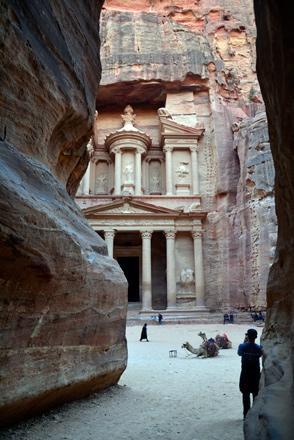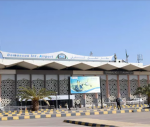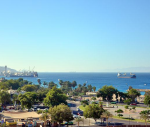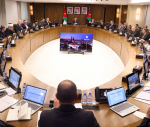You are here
UNESCO, GIZ preserve unique mosaic heritage in Rihab
By JT - Jan 19,2021 - Last updated at Jan 19,2021
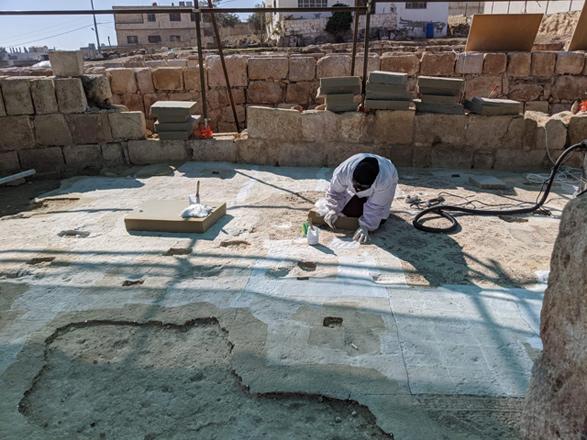
One of UNESCO workers is seen preserving mosaic floors from the Byzantine era — approximately 6th century AD in Rihab, Mafraq, in a project titled ‘Employment Opportunities for Cultural Heritage Safeguarding in Jordan’ (Photo courtesy of UNESCO)
AMMAN — In the hills of Rihab, a village a few kilometres away from Mafraq, the remains of several ancient churches can be found, each with a rich history. At the Church Complex of St John the Baptist and Priests Sergius and Procopius, UNESCO workers are preserving mosaic floors from the Byzantine era — approximately 6th century AD.
It is at one of these churches that Raeda Khazaleh, 45, from Rihab is busily working. In October 2020, she started her involvement with the UNESCO project “Employment Opportunities for Cultural Heritage Safeguarding in Jordan”, according to a UNESCO statement.
Through a Cash-for-Work mechanism, this project provides short-term job opportunities and training in cultural heritage preservation, the statement said.
Implemented by UNESCO with the Deutsche Gesellschaft für Internationale Zusammenarbeit (GIZ) , in cooperation with the Department of Antiquities and in partnership with the Association of Volunteers for International Service (AVSI), the German Jordanian University, School of Architecture and Built Environment and a number of local and international conservation experts, this project is part of the Federal Ministry of Economic Cooperation and Development, Germany (BMZ) Special Initiative “Tackling the root causes of migration, stabilising host regions, supporting refugees”.
In Rihab, the activities are focused on mosaic preservation and site presentation at the church of St Maryand the church complex of St John the Baptist and Priests Sergius and Procopius, to support the Department of Antiquities and the Rihab municipality in generating greater touristic interest in the history and archaeology of the area and in the protection of their heritage, according to the statement.
When asked to describe her work, Khazaleh said: “We are restoring the mosaics and from the training I learned the materials that are needed to preserve the pieces of the mosaic. Another one of my duties is to remove the cement between the stones”.
Some mosaics are still being uncovered, while others are well known and have been documented, but having remained exposed for a long while they require urgent conservation interventions.
"UNESCO is supporting the community in several ways, by providing short-term employment and income for local community members during these unprecedented times, preserving the community’s cultural heritage, and supporting the Rihab municipality in works that would enhance the tourist attractiveness of the site", said Giorgia Cesaro, project officer at the UNESCO Amman Office.
Not all of Khazaleh’s experiences have been positive, and she has overcome many challenges in her life. Her motivation as to why she became involved in the Cash for Work activity is complex.
“I was unemployed and I wanted to be independent. I am an orphan from both sides of my family, and am divorced with no income, but I believe in moving forward. I am also interested in archaeological conservation.[Cultural heritage preservation] is an absolute priority because it is our history and our ancestors, so I feel an obligation and a responsibility,” she said.
UNESCO is committed to achieving workforce diversity in terms of gender, nationality and culture. This project specifically adheres to the Cash for Work Standard Operating Procedures for Jordan, the statement said.
The project fully aligns with the 2030 agenda for Sustainable Development, particularly SDG8 which promotes sustained, inclusive and sustainable economic growth, full and productive employment and decent work for all, and SDG11 which promotes sustainable cities and communities, read the statement.
Through the programme she has been part of, Khazaleh discovered her passion for cultural heritage preservation. “I find that I am enjoying my work so much that I don’t take a break until I have finished my task, I get very involved and focused,” she said.
Related Articles
AMMAN — UNESCO project “Employment Opportunities for Cultural Heritage Safeguarding in Jordan” aims to invest in cultural heritage preservat
AMMAN — The Association of Volunteers in International Service (AVSI Foundation) is an Italian NGO which launched a series of projects aimin
AMMAN — A team of 28 Jordanians are hard at work in Petra this month, as part of an ambitious project carried out by UNESCO. The projec


